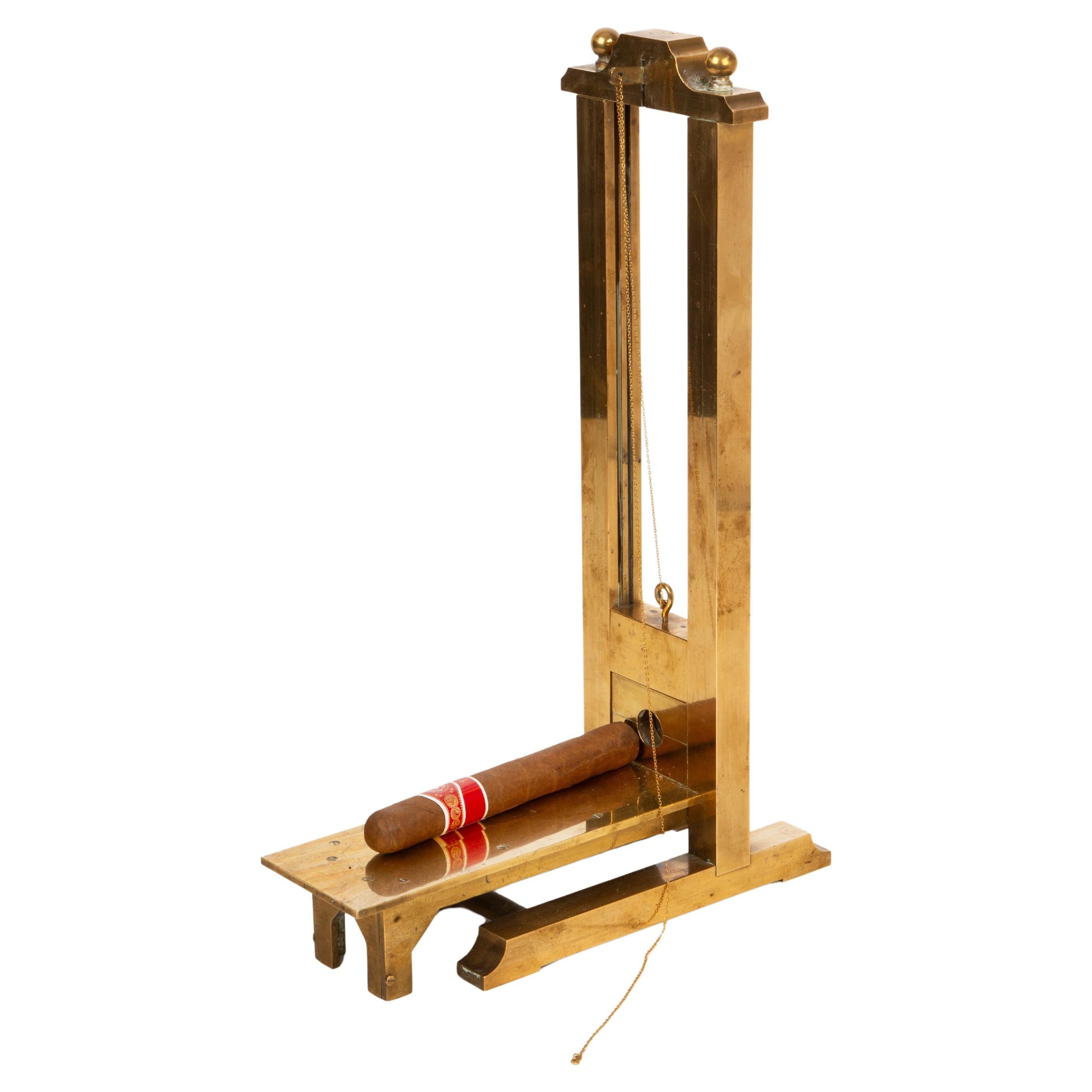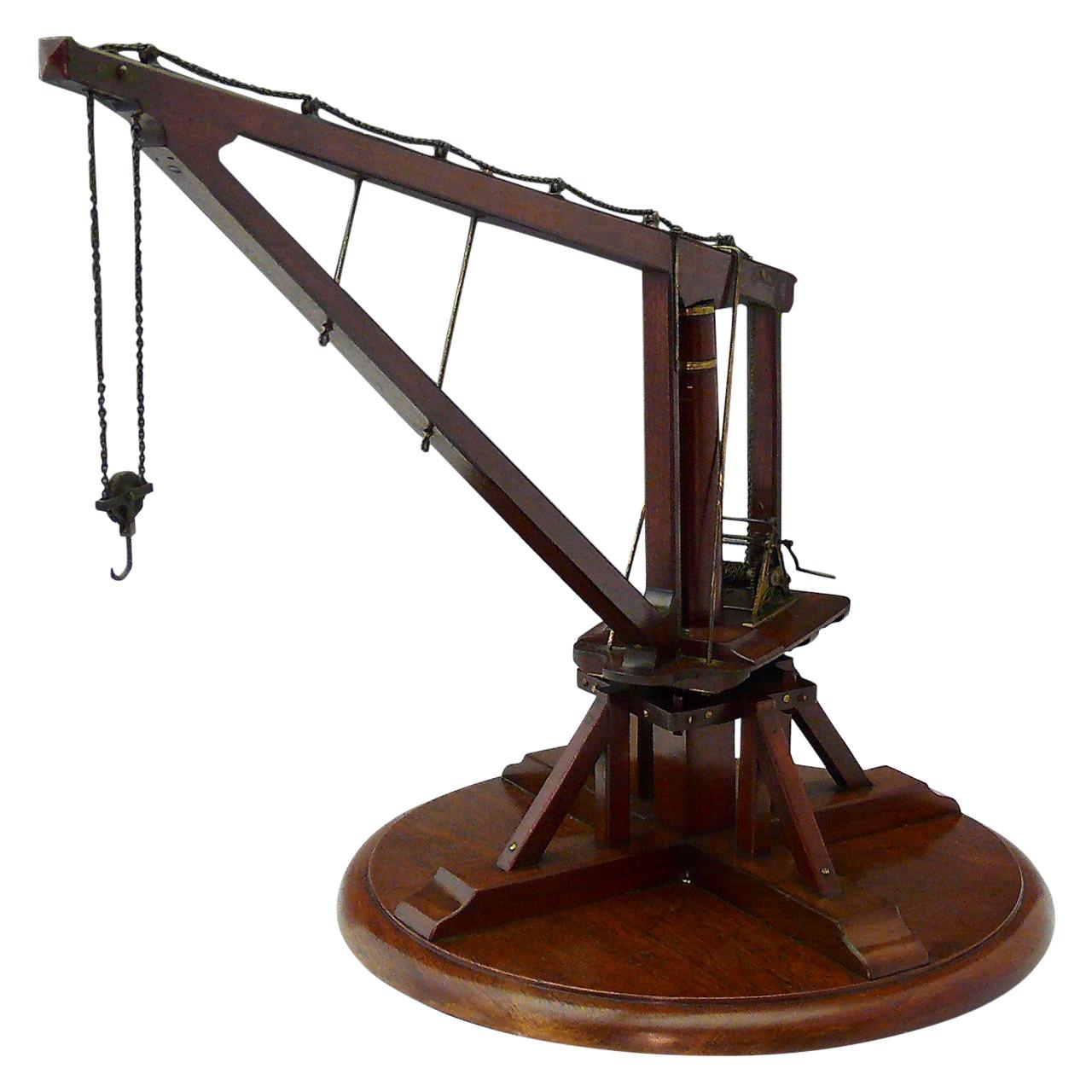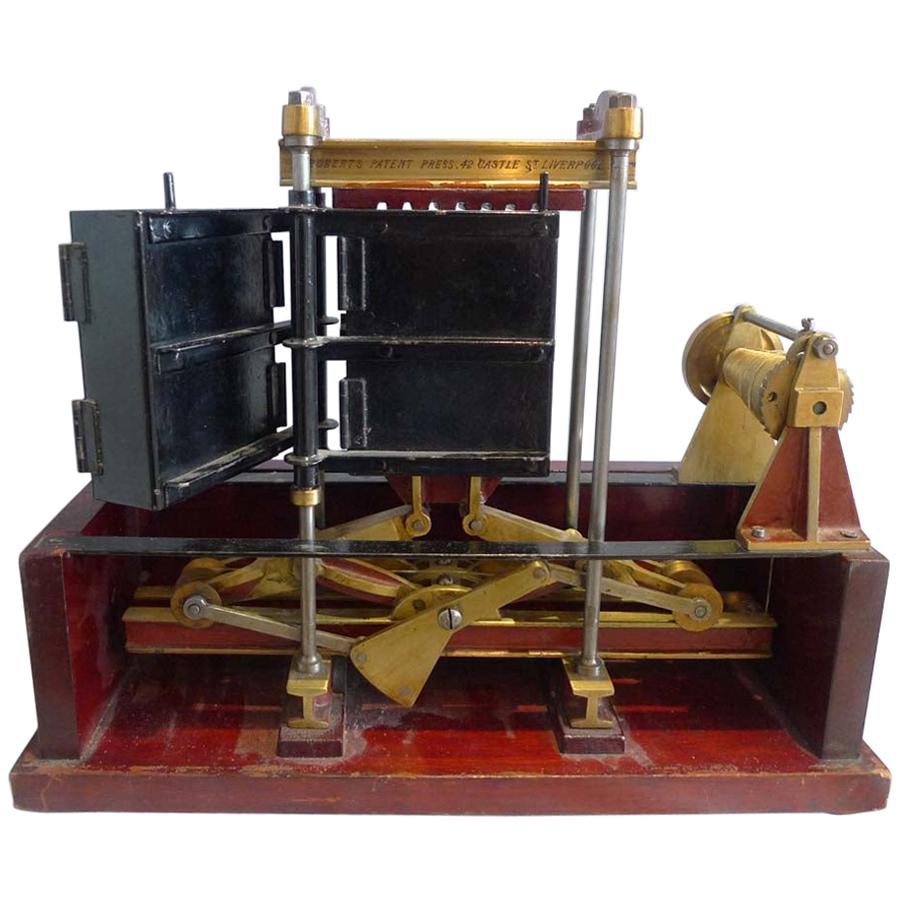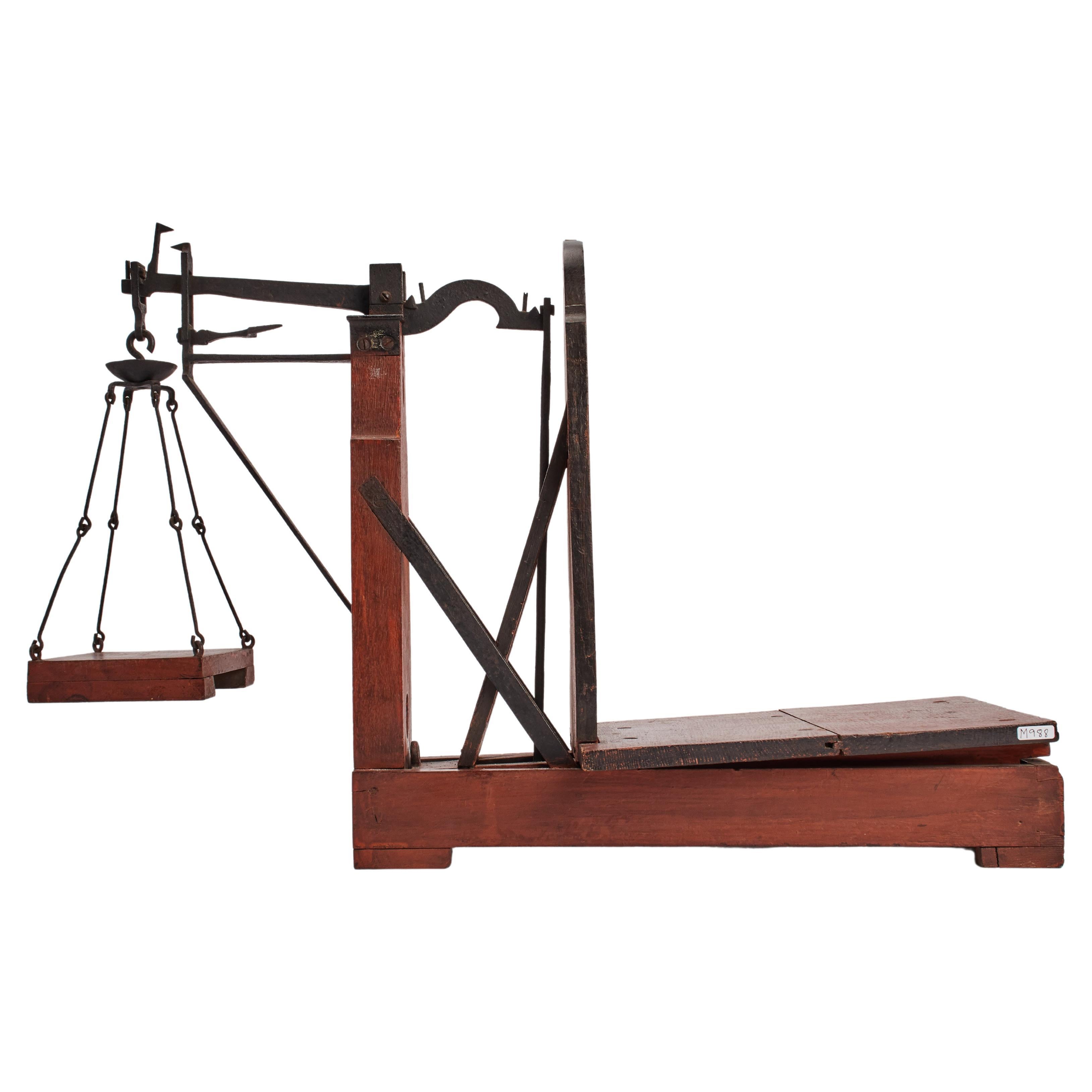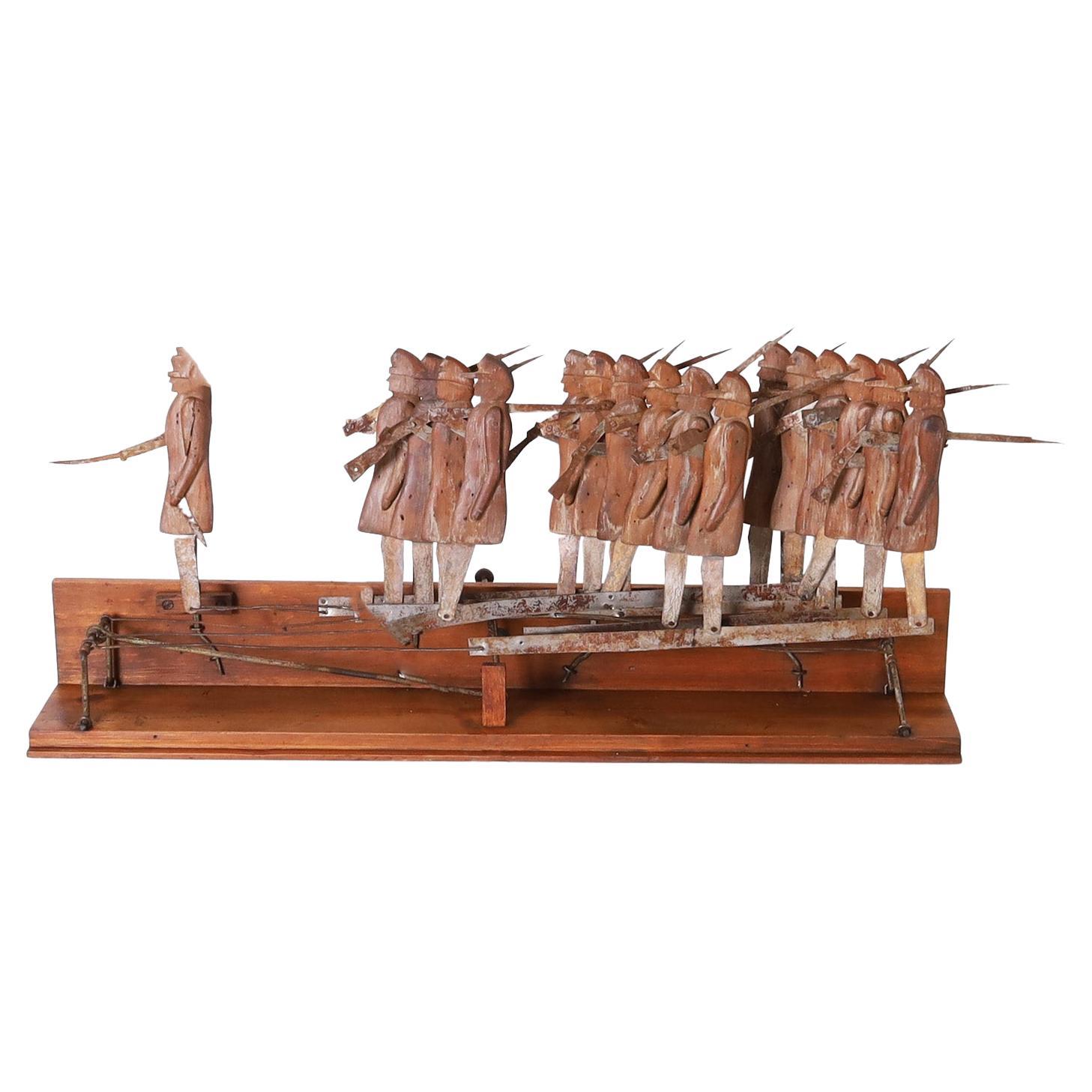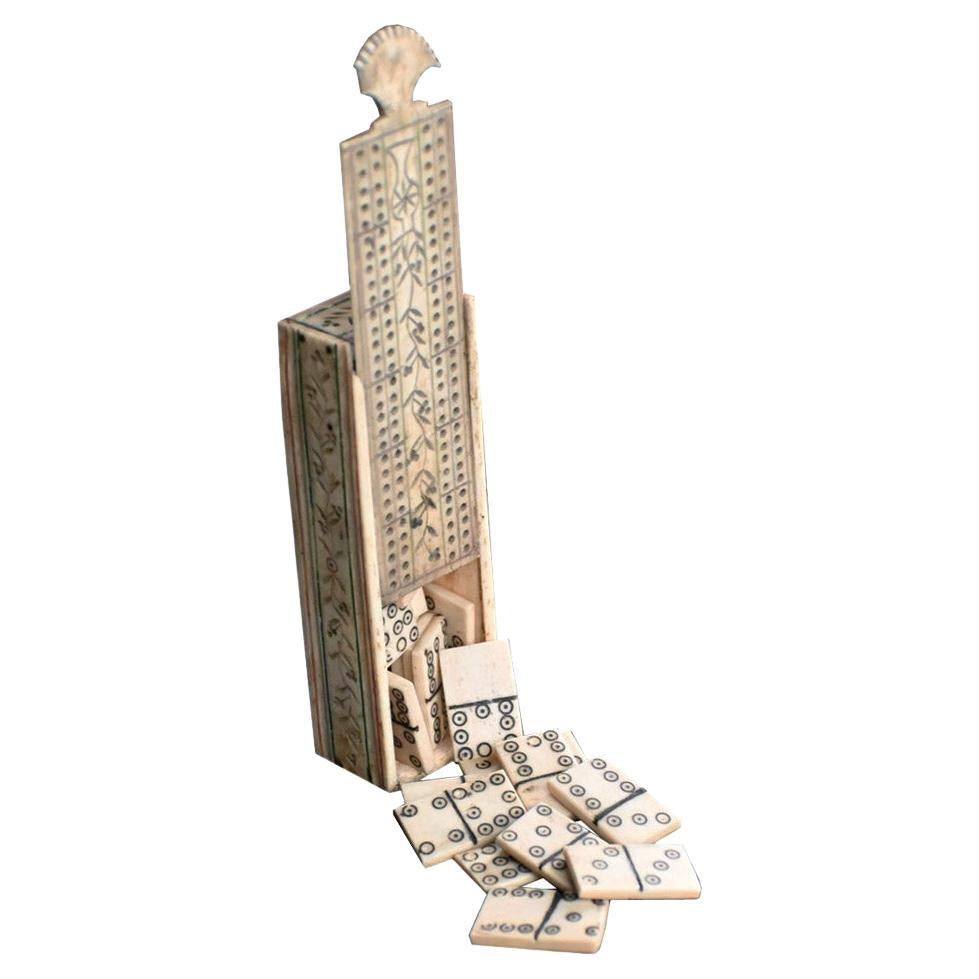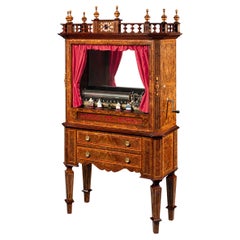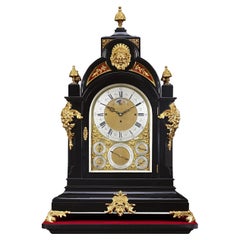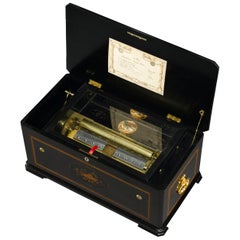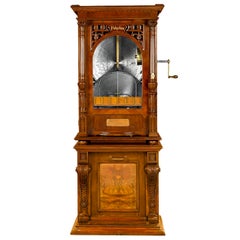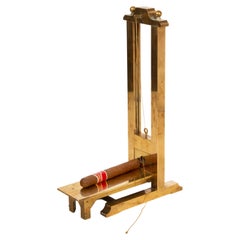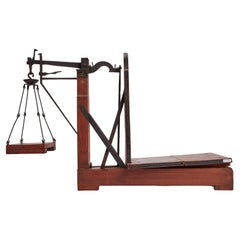Items Similar to Napoleonic Prisoner-of-War Guillotine
Want more images or videos?
Request additional images or videos from the seller
1 of 10
Napoleonic Prisoner-of-War Guillotine
$39,850
£30,359.61
€35,005.85
CA$55,769.27
A$62,312.87
CHF 32,596.54
MX$764,155.47
NOK 416,521.88
SEK 394,973.08
DKK 261,267.41
Shipping
Retrieving quote...The 1stDibs Promise:
Authenticity Guarantee,
Money-Back Guarantee,
24-Hour Cancellation
About the Item
An incredible and extremely rare artifact of world history, this mutton bone model of a guillotine was created during the Napoleonic wars by a French prisoner of war. Many of the inmates at the prisoner of war camps were skilled artisans long before they were soldiers, and because of the long duration of the conflict and cost of care, their captors encouraged detainees to use their skills to create objects to be sold at civilian open markets. Because of the intricacy of these fascinating objets d'art, very few of these models have survived the test of time. This masterpiece is impeccably detailed with soldiers and cannons lining the platforms. Adding to the rarity of this piece is that it has moving parts, as only a scant few model carvings were ever created with such mechanical accuracy. The soldiers have movable arms, while the guillotine features a movable "blade" for added authenticity.
By many accounts, Napoleonic prisoners of war were confined to mostly makeshift prisons in old castles, naval dockyards and purpose built camps. Though treated fairly well, prisoners were typically kept in rather dark conditions and were not allowed to have objects that could be used as weapons, including tools. That means inmates would have had to create these amazing models using handmade tools made of whatever was available, including shards of glass for carving. Additionally, this activity was most likely done by candlelight. With this perspective, the precision and intricacy of this model becomes even more incredible.
Circa 1810
Measures: 7 5/8" wide x 10 1/4" deep x 18" high
With stand: 9 1/2" wide x 11 3/4" deep x 20 1/2" high.
- Dimensions:Height: 18 in (45.72 cm)Width: 7.63 in (19.39 cm)Depth: 10.25 in (26.04 cm)
- Materials and Techniques:
- Place of Origin:
- Period:
- Date of Manufacture:circa 1810
- Condition:
- Seller Location:New Orleans, LA
- Reference Number:Seller: 31-51041stDibs: LU891129946442
About the Seller
5.0
Recognized Seller
These prestigious sellers are industry leaders and represent the highest echelon for item quality and design.
Established in 1912
1stDibs seller since 2010
109 sales on 1stDibs
Typical response time: 3 hours
- ShippingRetrieving quote...Shipping from: New Orleans, LA
- Return Policy
Authenticity Guarantee
In the unlikely event there’s an issue with an item’s authenticity, contact us within 1 year for a full refund. DetailsMoney-Back Guarantee
If your item is not as described, is damaged in transit, or does not arrive, contact us within 7 days for a full refund. Details24-Hour Cancellation
You have a 24-hour grace period in which to reconsider your purchase, with no questions asked.Vetted Professional Sellers
Our world-class sellers must adhere to strict standards for service and quality, maintaining the integrity of our listings.Price-Match Guarantee
If you find that a seller listed the same item for a lower price elsewhere, we’ll match it.Trusted Global Delivery
Our best-in-class carrier network provides specialized shipping options worldwide, including custom delivery.More From This Seller
View AllMermod Fréres Station Cylinder Music Box
By Mermod Frères 1
Located in New Orleans, LA
This exceptionally wonderful and rare automaton cylinder musical box by the Mermod Fréres firm of Sainte-Croix, Switzerland is a marvel of musical crafts...
Category
Antique 19th Century Swiss Other Musical Instruments
Materials
Walnut
Monumental Three-Train Bracket Clock by J.C. Jennens & Sons
Located in New Orleans, LA
This intricately detailed 19th-century bracket clock from famed English firm J.C. Jennens & Sons is monumental in size, likely made for one of the great world exhibitions or perhaps to put in the firm's own store window. The eight-day timepiece has a triple fusee...
Category
Antique 19th Century English Table Clocks and Desk Clocks
Materials
Bronze
Mandolin Singing Bird Automaton Music Box
Located in New Orleans, LA
This exceptional singing bird cylinder music box is a wonder of Austrian mechanical ingenuity. Not only does it play a selection of classical airs with remarkable tone and clarity, but its lush sound is accompanied by a colorful, singing bird automaton...
Category
Antique 19th Century Austrian Other Musical Instruments
Materials
Satinwood
Polyphon Autochange Disk Music Box
Located in New Orleans, LA
As exceptionally scarce as it is fascinating, this autochange disk player by the Polyphon Musikwerke in Leipzig, Germany can change between six disks and play with the incredibly rare addition of bells that accompany the music. Before a coin is dropped into the slot, slide the brass indicator until it points to the desired music selection, insert a penny, and the chosen song will play automatically. An extremely limited number of these automatic disk changers were ever created, and even fewer have survived in such outstanding condition.
Standing over seven feet tall, this particular model boasts a magnificent walnut case with handsome burl panels on its original, matching storage cabinet. A true technical marvel for its day, Polyphon’s automatic disk changer symbolizes pure ingenuity and superlative craftsmanship. This antique player...
Category
Antique Late 19th Century German Other Musical Instruments
Materials
Brass
Raingo Orrery Clock
Located in New Orleans, LA
Orrery Clock
Zacharie Raingo
Circa 1817
This exceptional orrery clock represents one of the most historically significant and mechanically sophisticated ...
Category
Antique 19th Century French Table Clocks and Desk Clocks
Materials
Bronze, Enamel
$445,000
Chimes of Normandy Musical Clock
Located in New Orleans, LA
Chimes of Normandy Musical Clock
Early 20th Century
A masterpiece of horology and woodworking, the Chimes of Normandy Clock exemplifies early 20th-cent...
Category
Early 20th Century Table Clocks and Desk Clocks
Materials
Oak
You May Also Like
Off With Their Heads (Or Just the Cigar Tips): Brass Guillotine Cutter
Located in New York, NY
**Early 20th-Century Brass Guillotine Cigar Cutter**
Why settle for a boring cigar cutter when you can channel the drama of the French Revolution every time you light up? This early 20th-century brass guillotine cigar cutter, crafted by masterful French artisans, brings a touch of history and a whole lot of flair to your smoking ritual. Featuring a miniature guillotine...
Category
Early 20th Century French Louis XVI Tobacco Accessories
Materials
Brass
Victorian Wooden Scale Model Crane, circa 1880
Located in London, GB
Unusual large scale model of a late Victorian crane, circa 1880. Beautifully constructed in mahogany with brass binding and details and the original working metal winch and chains, a...
Category
Antique Late 19th Century British Victorian Historical Memorabilia
Materials
Brass
Model of a Baling Machine by Roberts Liverpool, England
Located in London, GB
An impressive model of a press or baling machine. The carcase is in mahogany while the working parts are in brass and steel. The goods to be pressed or baled are loaded in to the black containers...
Category
Antique Late 19th Century English Models and Miniatures
Materials
Brass, Steel
A seed scale model, France 1830.
Located in Milan, IT
Rare model of scale for seeds. Wooden and iron. France 1830 ca.
Category
Antique Mid-19th Century French Scientific Instruments
Materials
Iron
Marching Military Soldiers Mechanical Toy
Located in Palm Beach, FL
Antique mechanical toy ambitiously crafted with a metal mechanism moved by a crank in the back, sending civil war union soldiers, carved in pine...
Category
Early 20th Century American Campaign Toys and Dolls
Materials
Metal
Late 19th Century Napoleonic Prisoner of War Dominos
Located in London, GB
Late 19th century Napoleonic prisoner of war dominos 31
A good example of a late 19th Century Napoleonic prisoner of war (POW) hand carved set of 31 dominos, in a sliding painted ...
Category
Antique 1850s French Folk Art Toys
Materials
Bone
More Ways To Browse
World War 2 Furniture
Antique Napoleonic
Prisoner Of War
Napoleonic Furniture
Napoleonic Wars
Hand Cannon
Antique Carving Tools
Antique Bone Carvings
Miniature Cannon
Naval Cannon
Naval Model Model
Used Guillotines
Napoleonic Soldier
Antique Miniature Cannon
Carved Bone Miniature
Mutton Bone
Napoleonic Bone
Napoleonic Prisoner Of War
